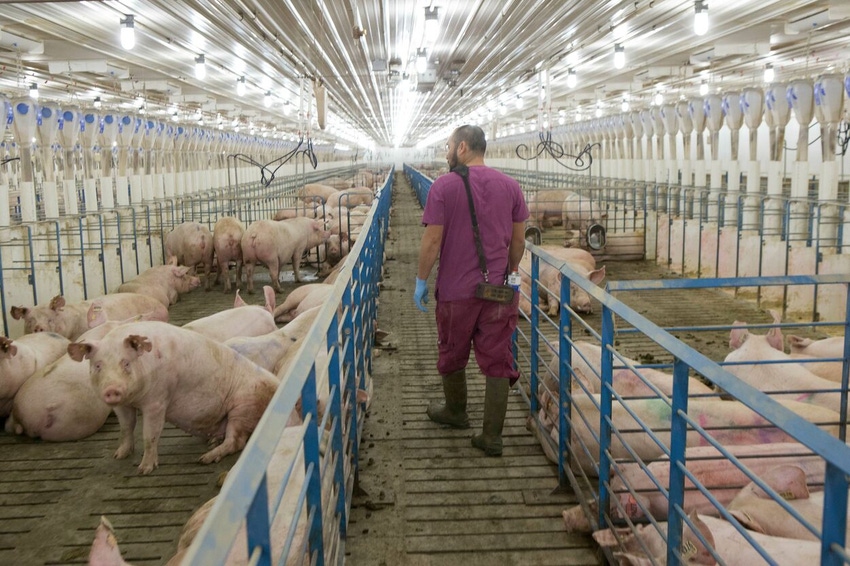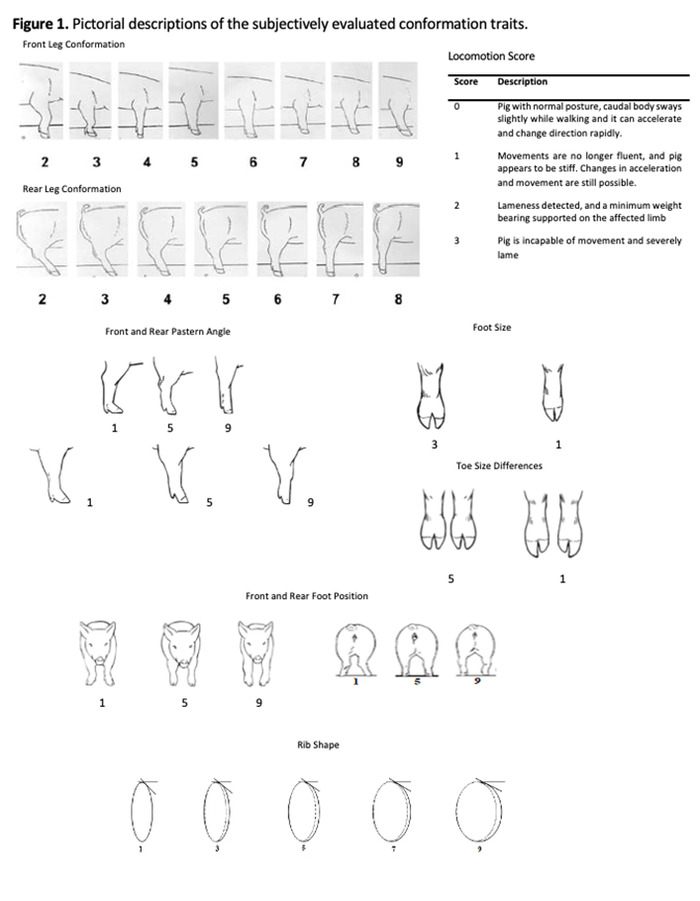Do we need to be selecting more robust sows for group-housed gestation?
April 4, 2023

Sow longevity continues to be of concern for the United States sow herd and producers continue to seek solutions. Removal rates have increased substantially over the last 10 years, with recent MetaFarms/SMS data indicating a 66.2% increase from 8.16% to 13.56% (2012-2021) (Eckberg, 2022).
Nearly 46% of the total removals on 6,000+ head farms are Parity 0-Parity 2 (Ketchem et al., 2020). Feet and leg issues/lameness are one of the primary reasons for removal. This presents a major animal welfare concern, in addition to a major economic challenge as those young sows that are disproportionately removed compared to their older contemporaries have not reached the third parity breakeven point (Stalder et al., 2000; Stalder et al., 2003).
Another challenge for the swine industry is the impending implementation of Proposition 12 and the unintended negative impacts it may have on sow longevity. Previously, the major sow locomotory demand centered around her ability to move between gestation-farrowing-breeding barns respectively, the ability to stand up to eat and drink daily, and have control to lay down gently thus avoiding crushing her piglets.
As the swine industry transitions to group-housed gestation, there will be increased locomotory demands placed on those sows. This may include increased resource competition, and dynamic group housing that includes multiple mixing events. This leads to the question: "do we need to be selecting more robust sows for group-housed gestation?" The study being discussed in this article will aim to provide evidence to address that question.
Ten structural conformation scores were subjectively evaluated on a population of 4,446 replacement gilts by four trained evaluators in summer 2019 at a commercial Iowa production system grower farm. The following traits were evaluated: locomotion score, front leg conformation, rear leg conformation, front pastern angle, rear pastern angle, front foot position, rear foot position, rib shape, foot size, toe size differences (Figure 1). Following structural conformation evaluation and formal gilt selection, replacement gilts followed the normal production flow through the gilt development unit and ultimately to their assigned sow farm.

For the purposes of this study, four study farms were identified, two stalled and two group-housed gestation facilities, with roughly 600 gilts arriving at each of the study farms. The remaining replacement gilts from the cohort were placed in group-housed gestation farms. Ultimately, 1,127 were placed in stalled gestation farms and 1,879 were placed in group-housed gestation farms. The sows were tracked throughout their productive lifetime and eventual removal type and reasons were recorded.
Breeding herd survival from birth to removal (culling or death) in days was estimated using the Kaplan Meier Survival Analysis which looked at the probability of a gilt to survive to a certain time point (removal in this study) given their score for a particular structural conformation trait. The scores for each trait for each sow were averaged across all evaluators for the analysis.
Each trait was evaluated from birth to removal to determine the differences between a score for that trait and survival. The birth to removal analysis included those that were removed from the grower and GDU. This highlights which gilts did not make it beyond gilt selection. Comparisons were also made for gilts that made it to a stalled or group-housed gestation farm by the number of productive sow days to standardize management practices. Those results highlight the sow's ability to thrive in that gestation housing system.
The results from the survival analysis indicated for LS that those gilts that displayed moderate to severe signs of lameness (Scores 2 and 3) do not get selected to enter into the breeding herd. There was no difference for those displaying no- and mild lameness (Scores 0 and 1) once they reached the breeding herd. This means that gilts with mild lameness signs can recover and thrive in both gestation systems.
For FLC, the increasing forward leg slope (Score >5) was related to improved longevity in the breeding herd from birth to removal and productive sow days in stalled gestation facilities, which is consistent with previous literature, however, there were no differences observed in group-housed gestation. For RLC, previous literature indicated that "posty" and "sickle-hocked" rear legs were negatively associated with longevity. However our results indicated that "posty" legged sows (Score >7) were at a greater risk for removal than "sickle-hocked" sows from birth to removal and productive sow days for stalled gestation.
For RS, increasing rib shape improves longevity, with more barrel-shaped sows living longer. Most of the narrower sows do not make it beyond gilt selection, however, there were no differences in survival once they make it to the either housing system. For FS, average and large sized feet (Scores 2 and 3) improve longevity, however, there were no differences in survival once they made it to either housing system. For FP, RP, FFP, RFP and TS, there were no differences in survival between scores for all housing conditions.
The results from this study indicate that for this production system with gilts sourced from this specific genetic supplier, correct gilt selection is critical to prevent structurally challenged gilts from entering into the breeding herd. However, as it relates to placing sows in group-housed gestation, once a gilt reaches the sow farm, there is no difference in survival between the scores within traits. For producers, this is encouraging because it indicates that gilt selection strategies may not need to change drastically for sows to thrive in group-housed gestation farms.
This project is part of the Improving Pig Survivability project and is funded by National Pork Board, the Foundation for Food and Agriculture Research and Pig Improvement Company. Questions can be sent to Grace Moeller via email.
References:
Eckberg, B. 2022. 2021 Sow mortality analysis. National Hog Farmer.
Ketchem, R., M. Rix, and C. Sharp. 2020. Part 3: What is going on with female death loss and culling? National Hog Farmer.
Stalder, K. J., R. C. Lacy, T. L. Cross, and G. E. Conatser. 2003. Financial impact of average parity of culled females in a breed-to-wean swine operation using replacement gilt net present value analysis. Journal of Swine Health and Production. 11:69–74.
Stalder, K. J., R. C. Lacy, T. L. Cross, G. E. Conatser, and C. S. Darroch. 2000. Net Present Value Analysis of Sow Longevity and the Economic Sensitivity of Net Present Value to Changes in Production, Market Price, Feed Cost, and Replacement Gilt Costs in a Farrow-to-Finish Operation. Professional Animal Scientist. 16:33–40. doi:10.15232/S1080-7446(15)31658-2.
You May Also Like



